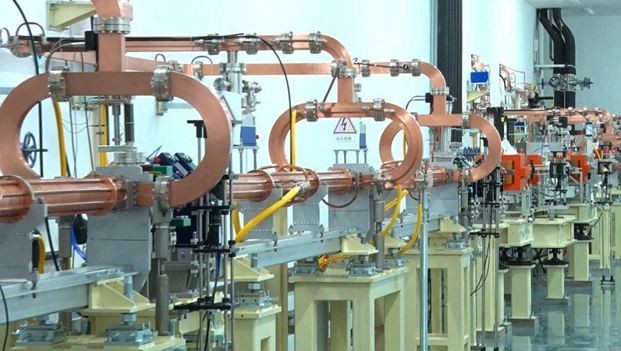Chinese scientists have announced the development of the Dalian Coherent Light Source (DCLS), a VUV FEL (Vacuum Ultra Violet, Free Electron Laser) light source that can deliver world's brightest FEL light in an energy range from 8 to 24 eV (electron volts).
DCLS is unique in that it only operates in the VUV region. VUV FEL light sources have wide applications in the study of basic energy science, chemistry, physics and atmospheric sciences.
VUV light sources are especially useful for sensitive detection of atoms, molecules and clusters. It can also be used to probe valence electronic structures of all kinds of materials.
The development of high-gain FEL has captured the attention of the scientific community in the last decade. High-gain FELs can provide the brightest light sources from VUV to the X-ray region, which conventional laser technology can't reach.
A series of high-gain FEL light source facilities in the X-ray and soft X-Ray region have been successfully developed across the world.
The facilities include LCLS in the U.S.A; SACLA in Japan; FLASH in Germany and FERMI in Italy. Other facilities are currently under development.
The LINAC based Coherent Light Source (LCLS) at the Stanford Linear Accelerator Center will allow scientists to make new scientific discoveries in many frontier research areas.
No dedicated high gain VUV FEL light source facility for basic research has been developed in the world thus far, however.
Led by Prof. Yang Xueming (Dalian Institute of Chemical Physics, DICP); Prof. Zhao Zhentang and Prof. Wang Dong (Shanghai Institute of Applied Source, SINAP), the team of scientists and engineers succeeded in developing DCLS.
During the last two months, this team has successfully commissioned the new FEL facility operating in both High-gain, Harmonic Generation (HGHG) and Self-Amplified Spontaneous Emission (SASE) modes.
A photon flux of 1.4x1014 photons per pulse was achieved by applying the undulator tapering technology in the HGHG mode,
The project began in early 2012 and was a partnership between research scientists and engineers from DICP and SINAP (Home Institute of the Shanghai Light Source), which are two institutes of the Chinese Academy of Sciences.
"We expect that the new facility will become a new machine for important scientific discoveries and international scientific collaborations," said Prof. Yang.
DCLS is supported by National Natural Science Foundation of China (NSFC) and jointly developed by Dalian Institute of Chemical Physics and Shanghai Institute of Applied Physics, Chinese Academy of Sciences.



























